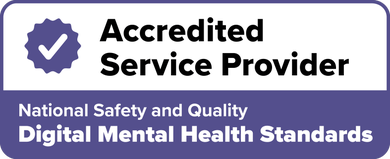Workplace bullying: What is it? How to get support?
In a Nutshell
Workplace bullying involves repeated, unreasonable behaviour that harms your health, safety, or wellbeing, and it's not always obvious.
It can have serious mental and physical impacts, but you have rights and clear steps you can take to protect yourself and get support.
Leaders and employers play a key role in prevention by creating respectful, inclusive environments where concerns are taken seriously.
It can be hard to tell the difference between tough management and unreasonable behaviour that crosses the line, especially when it has been going on for a while. But if your job is leaving you emotionally drained or uneasy, it may be time to step back and assess the situation more closely.
You might be dealing with workplace bullying.
This article will walk you through the signs of workplace bullying, how to get support, and what steps you can take safely.
Disclaimer: This article is for informational purposes only and should not be considered legal advice.
What is workplace bullying?
Bullying in the workplace happens when someone, or a group, repeatedly treats you unreasonably in a way that affects your health or safety. The most common examples of workplace bullying include yelling, insults, work intimidation, and being pressured to do something unethical.
Other times, it’s more subtle. You might be regularly excluded from meetings or social events, given impossible tasks, or deliberately left out of key information you need to do your job.
This repeated behaviour isn’t confined to the physical workplace. It can occur through online spaces, too. Hurtful messages, public shaming, or ongoing teasing in group chats are all forms of cyberbullying.
Whether it’s loud and in your face or subtle and behind the scenes, the toll it takes on your wellbeing can lead to lasting workplace trauma.
What’s not considered as workplace bullying
Not every upsetting experience at work is bullying. According to the Fair Work Act (Section 789FD(2)), reasonable management action carried out reasonably is not bullying.
Reasonable management actions can include:
Holding performance reviews
Addressing underperformance
Disciplinary action when needed
Changing or reassigning tasks
Investigating issues at work
Even when these actions feel challenging, they’re a normal part of being managed, so long as they’re done respectfully and fairly.
What’s the difference between bullying and harassment
Bullying and harassment in the workplace are both harmful, but they’re not the same.
Bullying is repeated, unreasonable behaviour that risks someone’s health or safety. It builds up over time, usually through ongoing exclusion, insults, or unfair workloads.
Harassment at work, on the other hand, happens when someone treats you unfairly or inappropriately because of your personal characteristics, like your sex, race, or a disability. Unlike bullying, which requires repeated behaviour to meet its legal definition, harassment can be identified from a single incident.
Related: Employee and workplace wellbeing
How bullying and harassment can affect you

Workplace bullying and harassment don’t just sting in the moment. They can lead to lasting psychological injuries and serious health consequences.
Safe Work Australia reports that workplace bullying can lead to extreme stress, emotional exhaustion, and lower job satisfaction. People exposed to such unfair treatment are more likely to feel disengaged at work, and worse, consider leaving their jobs altogether.
Beyond emotional effects, workplace bullying is also linked to a wide range of health issues, both mental and physical. A research on workplace bullying highlights increased risks of:
Mental health conditions like anxiety and depression
Physical discomforts like headaches, fatigue, and stomach issues
More serious health problems, including heart conditions and chronic pain
Workplace bullying is a serious issue, but you don’t have to stay stuck in a toxic work environment. There are clear steps you can take to protect yourself and get support.
What to do if you’re being bullied at work
Knowing how to report bullying in the workplace and how to outsmart your bullies can help you take back a sense of control. That doesn’t mean stooping down to their level. It means protecting your wellbeing, standing your ground, and using the systems in place to support you.
If you feel like being targeted at work, you can take these first steps:
Review your workplace’s policies and know your rights
Keep a clear record of what’s happened
Raise the issue with your manager, HR, a health and safety rep, or your union
Access your workplace’s Employee Assistance Program or EAP, if they have one
If you’ve already tried your company’s grievance procedure without resolution, or worse, if your manager is the one bullying you, you’ve still got support. The Fair Work Commission lets you apply for a Stop Bullying order and has a free advice service to help you understand your rights as an Australian employee.
Sometimes bullying is tied to things like your sex, age, race, disability, religion, or even union activity. If that’s the case, it might fall under federal workplace bullying laws. The Australian Human Rights Commission can investigate and help you effectively deal with bullies at work.
But if the bullying has already taken a toll on your mental health, you could be eligible for workers’ compensation for workplace bullying. In Queensland, workers who suffer a psychological or mental injury because of their job may be entitled to support, treatment, or compensation through WorkCover.
As the state’s main workers’ compensation provider, WorkCover Queensland offers psychological services for a range of work-related conditions, including stress, trauma, and psychiatric disorders, regardless of how the injury is diagnosed or classified.
Talked is a registered WorkCover provider and can connect you with registered psychologists within 24 hours. They can also work with your case manager to arrange approval using a GP referral.
Preventing workplace bullying: What employers & leaders can do
A respectful workplace starts with leadership. As a leader, employer, and HR representative, you play a big part in setting the tone.
So, how do leaders and HR handle bullying at work? It begins with clear, practical action:
Clear anti-bullying policies
Fair and consistent procedures
A culture of respect, inclusion, and accountability
It’s also about making sure your team feels safe to speak up, and that their concerns are taken seriously. When people know their wellbeing matters, they’re more likely to feel engaged, supported, and proud to be part of the team.
Support programs like Talked’s Beyond EAP are also worth considering. They don’t just respond to bullying but help prevent it by giving people space to manage stress, emotions, or behaviour early. Whether someone’s dealing with workplace stress or struggling with a colleague’s behaviour, therapy can provide a safe space to work through it all.
Creating safer workplaces, together

Workplace bullying isn’t just a bit of workplace conflict or a bad day. It’s a toxic pattern that wears people down and disrupts the foundations of a healthy work environment.
Understanding what bullying looks like and the real damage it can do is the first step toward stopping it.
A positive workplace culture is built on understanding, strong guidance, and genuine care for people’s wellbeing. Whether you're going through workplace bullying or working to prevent it, you’re not alone, and support is always available.
Together, we can build workplaces that look after each other.
Get Support
Overcome your career and book a free video consultation with one of our therapists
Essential Reading about Career
Career Therapists Available Now
ACT
Psychologist
I am a registered Organisational Psychologist who focuses on wellbeing, stress, work-life balance, workplace advice, coaching, and mentoring. I have a Masters in Psycholo...More








